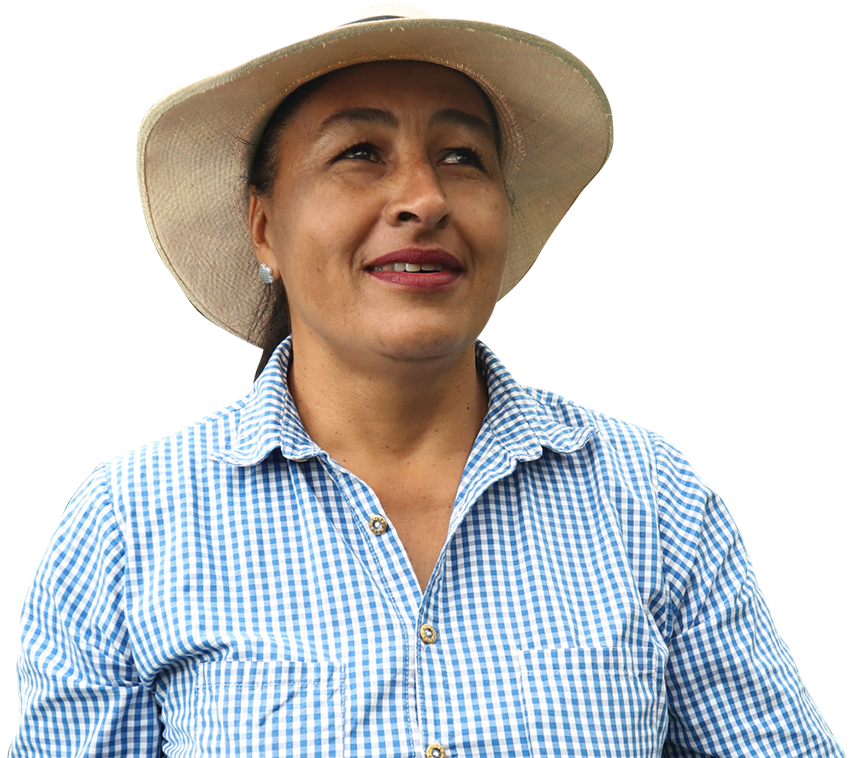FROM SEED TO CUP

In order to appreciate a cup of Colombian coffee, it is important to know the work and effort of the many people who ensure the quality of the final product for consumers worldwide.
The processes start from the research on the different varieties and forms of cultivation carried out by scientists at the Research Centre, Cenicafé, probably the most advanced of its kind in the world. The 540,000 coffee producing families in the country receive information from Cenicafé and advice to ensure the quality of their cultivation through the Extension Service of the Federación Nacional de Cafeteros.
The importance of the work of the Colombian coffee grower and their families:
To produce a pound of Colombian roasted coffee it is necessary to select around 1900 coffee cherries or coffee fruits in optimum ripeness.
COFFEE PRODUCTION PROCESS IN COLOMBIA

The secret is the selection and post-harvest process
That refers to the post-harvest process that includes de-pulping, washing and drying of coffee cherries, and that is undoubtedly one of the most arduous, thorough and personalized jobs in the entire coffee production chain. It is in these processes that quality coffee is obtained.
To collect the number of ripe fruits that are required to obtain a pound of roasted coffee, it is necessary to wait patiently for one coffee tree to produce, for a whole year. In the case of less productive varieties, which produce shaded coffee, it is necessary to obtain the fruits of more than two coffee trees during the same year to obtain the same pound of roasted coffee. The art of producing a good Colombian Coffee with selective collection and an excellent post-harvest process is undoubtedly an artisan and patient work that few consumers know and value in its fair dimension.
A coffee family in Colombia has an average production equivalent to 1,400 kilograms of green coffee per year, which means about 2,360 pounds. To produce this volume of coffee it is necessary to select in the collection processes, the equivalent of about 5.2 million coffee cherries, which must also be washed and dried to obtain a quality product, discarding the defective beans during this process.
At the end of these initial works, the so-called parchment coffee is obtained. It is at this point that a large part of the producers takes their coffee to the domestic marketing network in Colombia. The dried grain parchment is hulled to remove the yellow layer that covers it and get the green coffee almond. Once the parchment has been removed in the hulling machines, the grain is carefully selected and classified, taking into account its size, weight, color and physical appearance (defects). This almond coffee is the input for the production of roasted coffee, soluble coffee and coffee extracts from the industrialization processes of coffee, and is characterized by its green color, a characteristic smell of fresh coffee and an average humidity of 10% to 12%.
Colombian coffee can only be exported if it meets the current minimum quality parameters, which are reviewed in all ports from where coffee is exported in Colombia. This work is done by Almacafé.
For this green coffee to be exported it has had to go through different points of analysis of sensory quality, granulometry and humidity in accordance with the current regulations in Colombia (see national regulation).
Through the 100% Colombian Program, roasters from all continents buys their Colombian green coffee and sell it under their 100% Colombian brands to consumers worldwide.
To ensure quality, the efforts of Colombian coffee growers do not end in their territory. Through the 100% Colombian Program, roasters from all continents buy their Colombian green coffee and sell it under their 100% Colombian brands to consumers worldwide.
Colombian Coffee can also reach your cup in a coffee shop or restaurant that purchases or uses Colombian roasted coffee. Colombian coffee growers, seeking to generate more knowledge about their effort and their origin, have also developed Juan Valdez coffee shops in order to promote their product and bring a kind message to the consumer associated with their effort, respect and dedication for drinking.
